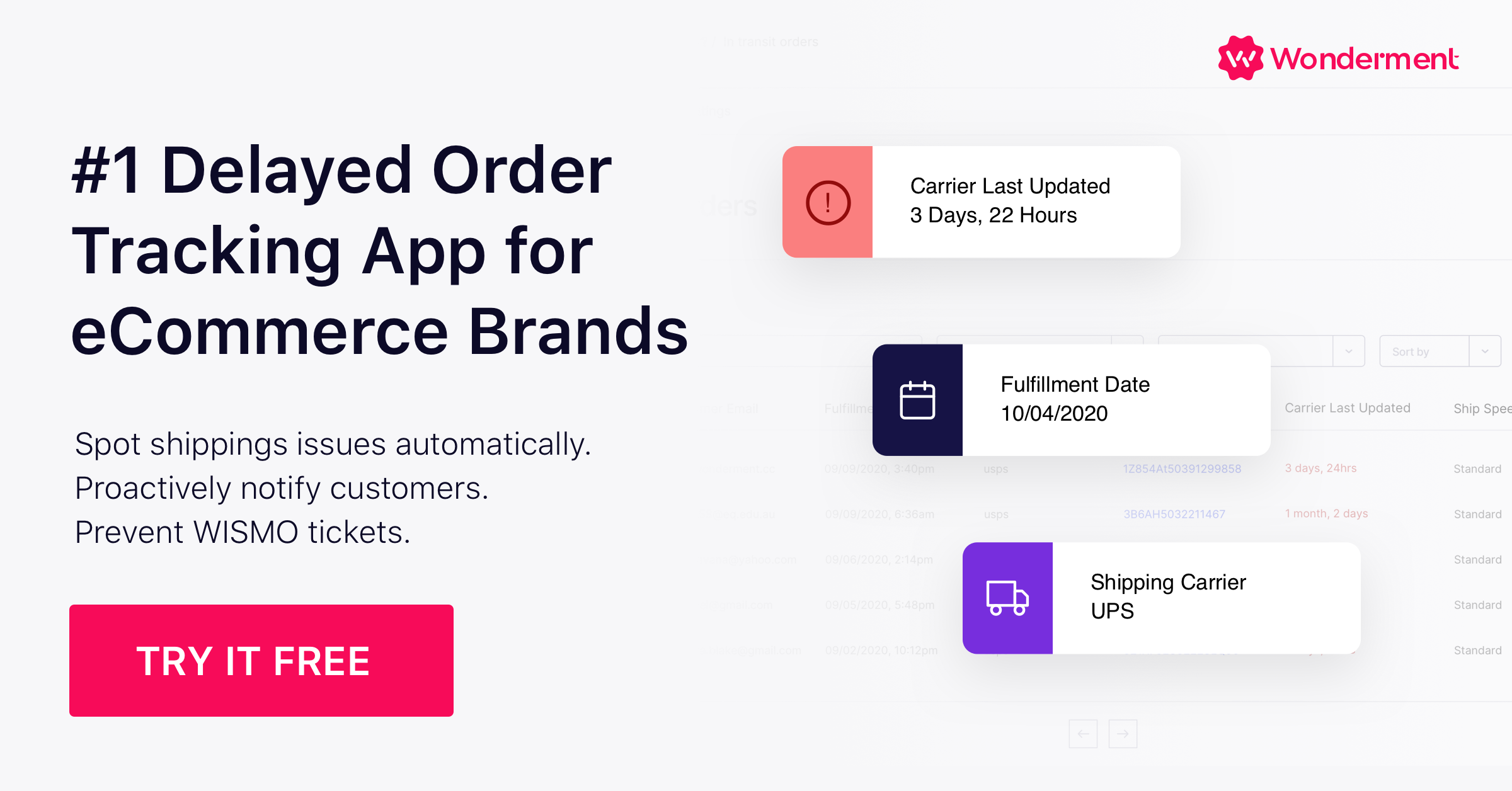Retention Fundamentals Recap: 3 Major Takeaways
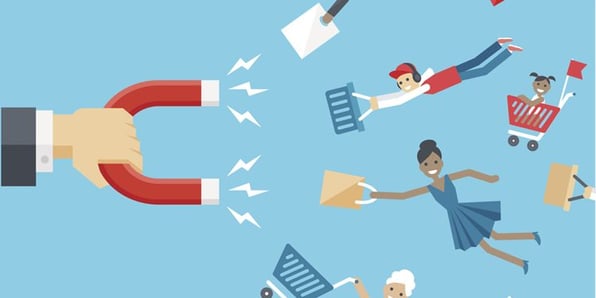
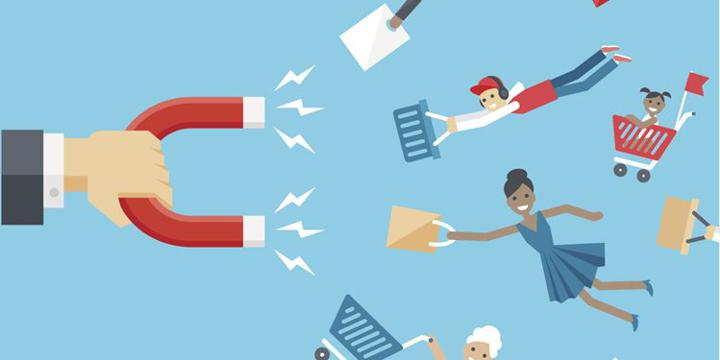
Is it just me, or is eCommerce experiencing a few growing pains these days?
You know, all that hubbub regarding "the DTC reckoning," skyrocketing customer acquisition costs, demanding consumer preferences, and clone-like competitors that appear faster then you can say TikTok.
And oh yea, let's not forget the impending recession/depression/pandemic whatever your preferred doom terminology of choice.
With all the uncertainty, there is a glimmer of hope.
Since the early 2000s, e-commerce has experienced a radical shift in how we do business. It's never been easier to spin up a storefront, pick a niche, build an audience, get discovered instantly at low cost, and ship products to doors in a matter of hours.
Due to the ease of launching companies, plus soaring investor and consumer expectations, it's clear the industry has over-indexed on growth...and to do so at all costs. The problem? Doing what worked in "the good 'ole days" is no longer what works today. Brands are struggling to produce the same economical returns from tried-and-true marketing tactics.
It's never been easier to start an e-commerce business; it's also never been more challenging to scale one. [click to tweet]
We've oversaturated Facebook. We've oversaturated email. We've oversaturated display ads. Soon we'll oversaturate SMS, chatbots, and whatever new trendy platforms the cool kids flock too.
Now, more than ever, keeping our customers and retaining them over the long-term is what matters most. Retention is the key performance indicator (KPI) of the future. As acquisition becomes increasingly more expensive, retention practices need to be considered with the same gusto and love and obsession as our once-trusty top-of-funnel tactics.
This decade, retention marketing is the new growth marketing. [click to tweet]
That's why is I was thrilled (that's an understatement) to sit in on a live webinar, Retention Fundamentals by Adrianne at ADmission and Kristen at ChurnBuster.
The webinar is chock-full of goodies, but I'm summing up my three favorite takeaways below.
1. Mindset first, tactics second
Honestly, I was so, so relieved to see this mentioned right off the bat. One of the biggest mistakes I see so many e-commerce merchants make is that growth is instantly a tactic or tool problem when instead it begins with strategy, culture, and mindset.
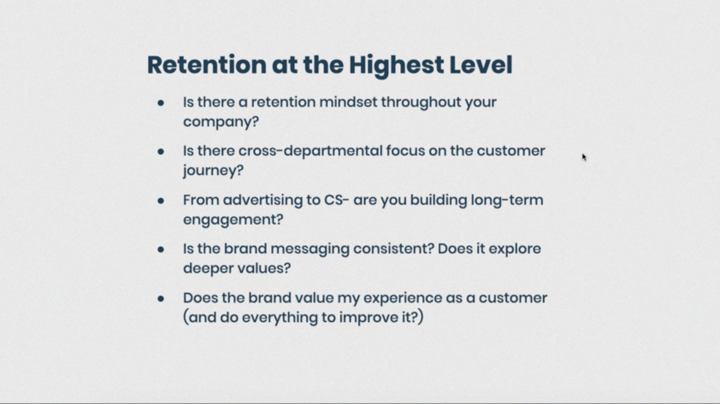
If you want to see your LTV catapult, retention has to sit within the heart of your organization, company-wide. Not just within marketing, but across customer service, fulfillment, support, and sales.
Kristen and Adrianne suggest you adopt retention with an almost philosophical approach. Start by auditing your customer journey as if you were the customer yourself. Experience the entire flow from first to last touch to understand what can be improved and what you should double-down on.
Aligning your business around key metrics such as LTV, payback period, and cash multiplier will also help focus on the business on profitability and long-term growth (more on e-commerce business metrics here). If the business is aligned on the metrics that matter, it will be easier for the company to move in the same direction.
2. Respect thy customer's inbox
No one likes to receive email spam or be pummeled with ads or marketing messages all-day long.
Yet, such is life. It's funny, we do onto our customers the things we ourselves dislike and find annoying.
I get it. The more customers you get in front of and more often, the greater the chance of increasing sales. In many cases, we've done the math that actually shows for every X number unsubscribes, it still results in X number more sales. Sounds like a reasonable sacrifice, after all, we tell ourselves that maybe those unsubscribers wouldn't have purchased anyway.
I really don't believe this strategy will be sustainable in the long run. Nor is it a economical way of thinking. The more people you lose now the more expensive it will be to win them back or acquire brand new eyeballs in the future.
Attention is the world's most limited resource. We have to treat it so.
"It takes months to find a customer and seconds to lose one." - Vince Lombardi [click to tweet]
Channels like email and paid can be a massive lever for long-term brand building but we've become addicted to instant sales and instant results.
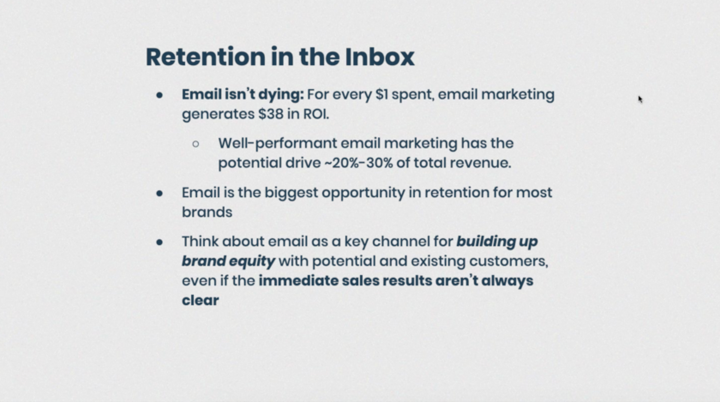
Adrianne and Kristen's suggestion:
"Think about email as a key channel for building up brand equity with potential and existing customers even if the immediate sales results are immediately clear."
Do things such as, dare I say, create and promote content that isn't selling anything at all (gasp).
Or like, wait a hot minute to cross-sell products, y'all. Promote additional product recommendations in emails three or four or longer, after the customer has received the first item and a series of educational content, which are the breadcrumbs to repurchase.
OUI The People does a phenomenal job at this. Their email and blog are over-flowing with educational material like how to shave, product ingredients you should know about, and more. The conversion rate from email to sale might be a lagging indicator, but it's clear their value and brand affinity is instant.
Example:
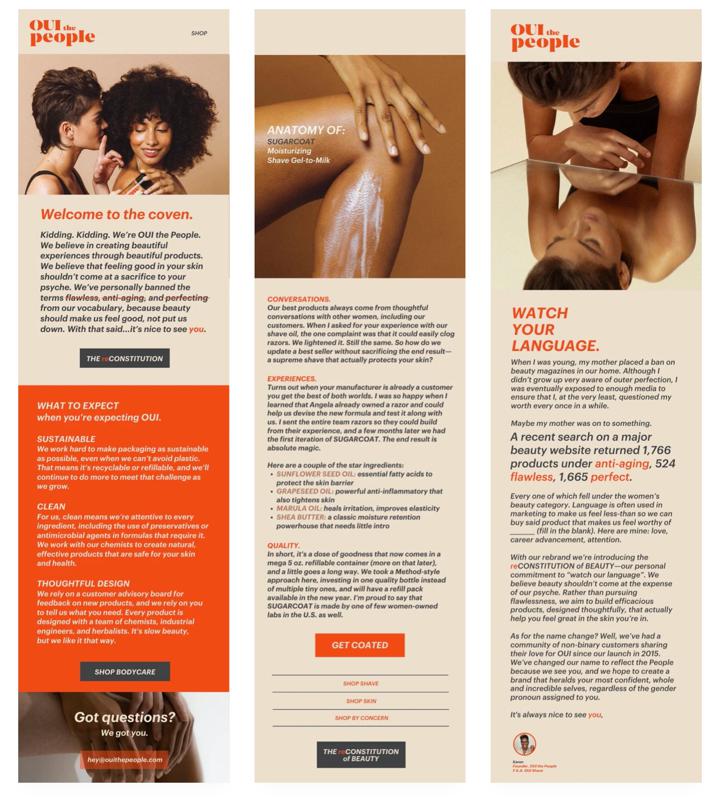
(Photo credit: CommonThread)
Another example; I recently received an email from Kitchenaid that, for the first time ever, wasn't just selling me appliances. The contents of the email showcased a few awesome recipes, timed with the season. Only at the bottom featured recommended products, which were related to the recipes. Now that's the type of content I just eat up (pun intended).

Especially for categories and items that consumers might not purchase often or are heavily considered purchases (like refrigerators), building that long-term equity is important so that you are top of mind when the customer is ready to buy. But even if you sell products that are replenishable, I'd argue the same is equally as important, as you might be in a war for mindshare against more competitors and more choices.
In a world where every email subject line these days reads: "LAST CHANCE", "SALE ENDING," and "LAST DAY TO TAKE 15% OFF," and whatever false-urgency tactic is at play, now's a good opportunity to do the opposite. Be different.
3. True retention is omnichannel
Retention is as much about going wide as it is going long. Every touchpoint in the customer journey is an opportunity for surprise and delight.
The retention mindset must not only sit cross-department but also be executed cross-channel; in email, in ads, in chat, with in-store sales reps; it all has to gel.
The webinar had some fabulous examples. For one (and I love this):
"Do you know which customer experience has a 100% open rate? The package that arrives on the doorstep." [click to tweet]
Yet how often are we maximizing the shipment as a way to build brand equity?
They gave a few examples of brands that use the delivered package as a way to include more educational material, free gifts or even making the packaging itself a surprise (e.g. flowers!) that can be displayed and reused in the home. How cool is that?
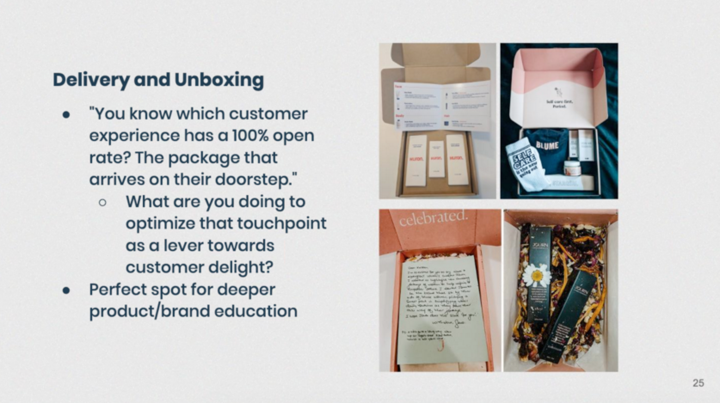
In another example, Kristen mentioned how Manscaped focuses on grooming their customers for life (ok I'll stop now) by sending a free gift for every 3rd purchase. Giving away free product doesn't have to be the only solution, of course. There are so many value-add experiences you could be delivering, digitally or in the physical world.
Remarketing ads also have so much untapped potential. It's common to use retargeting ads to market previously viewed products or items waiting in the cart, but Adrianne suggests that advertising can be used to promote educational content rather than just products.
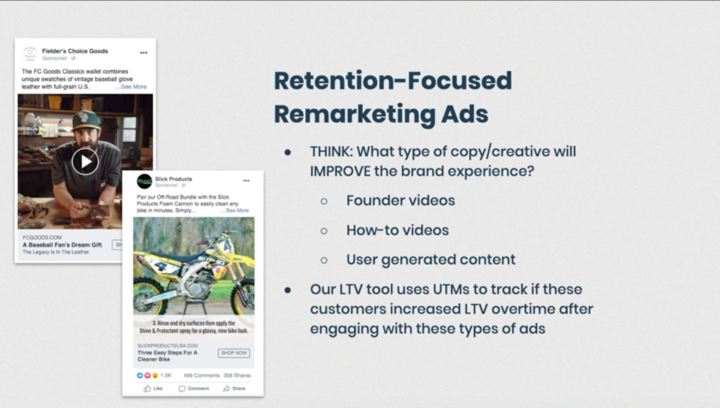
Things like founder videos (putting a face to the brand), how-to articles, user-generated content, or even sneak-peeks inside our company culture or manufacturing process all help consumers build a stronger connection with your brand.
Final thoughts
There are SO many takeaways I got from this webinar but I don't want to spoil it. In fact, I left out much of the baller tactical advice Adrianne and Kristen blessed us with. You should check it out and watch it here.
I hope after this, retention becomes more of a focus than ever before.
After all, if not you, certainly your competitors will, and it'll happen faster than you can Flip the Switch.
Want to know more about retention marketing? Subscribe to receive updates.
